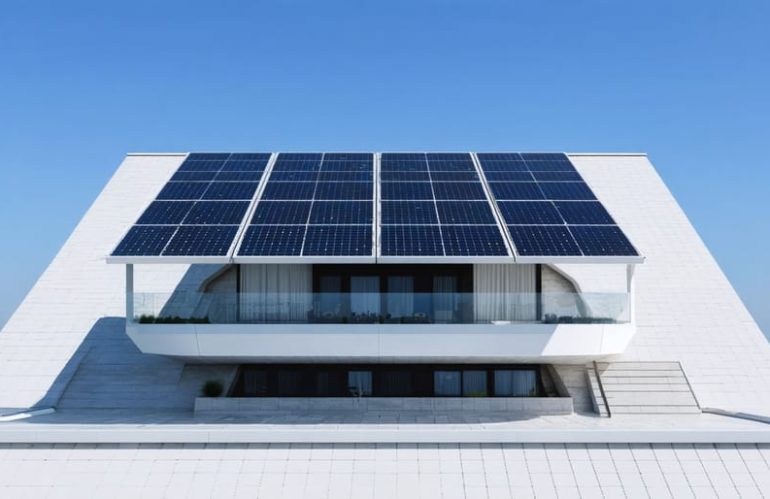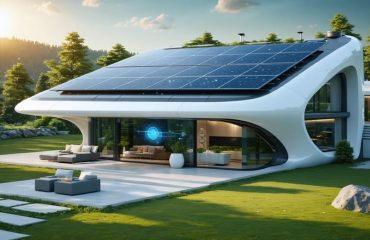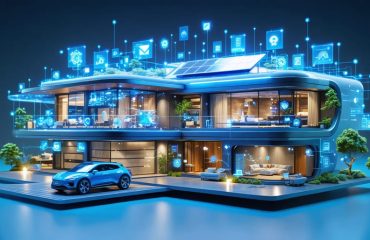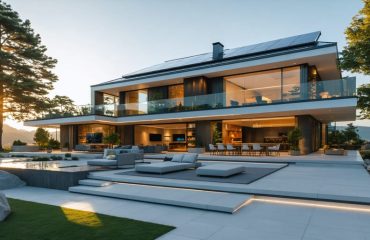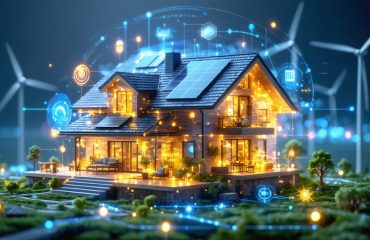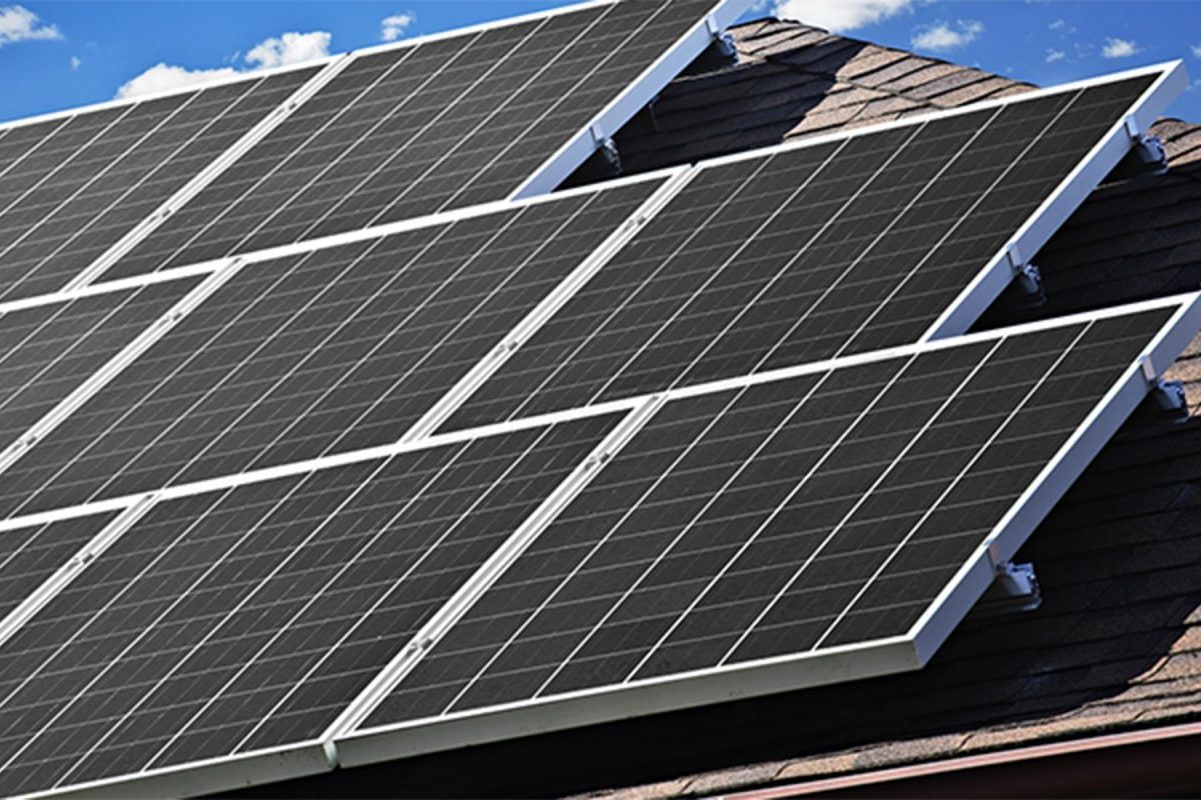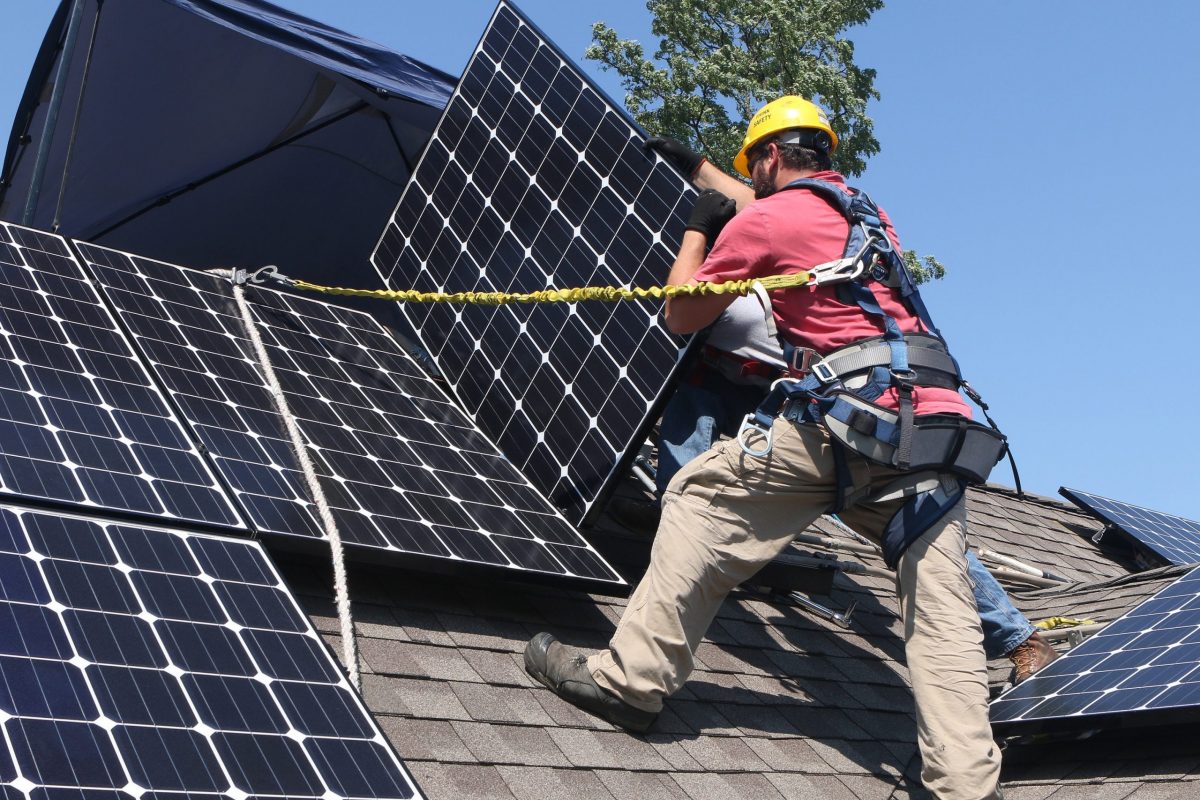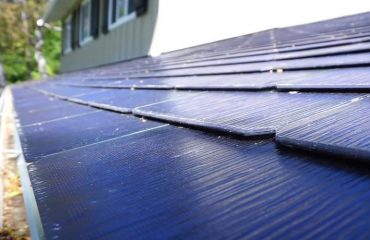Solar technology has undergone a remarkable transformation in the past decade, revolutionizing how we harness the sun’s energy for our homes and businesses. Today’s solar panels achieve conversion efficiencies exceeding 23%, nearly double what was possible just fifteen years ago, while costing less than half as much to manufacture and install.
Recent breakthroughs in photovoltaic materials, particularly the emergence of perovskite-based cells and bifacial panels, have pushed the boundaries of what’s possible in renewable energy. These innovations don’t just capture more sunlight – they’re also more durable, more affordable, and increasingly aesthetically pleasing, addressing key concerns that previously held homeowners back from making the switch.
For homeowners considering solar installation today, the technology offers an unprecedented combination of reliability and return on investment. Modern panels can maintain peak performance for 25-30 years, while smart monitoring systems provide real-time insights into energy production and consumption. With federal tax incentives at their most favorable levels and installation costs continuing to decline, solar power has evolved from an ecological choice into a compelling financial investment that pays dividends through reduced energy bills and increased property values.
This guide explores the latest advancements making solar technology more accessible and efficient than ever before, helping you make an informed decision about powering your home with clean, renewable energy.
Next-Generation Solar Efficiency: What’s Changed
Bifacial Solar Panels: Double-Sided Energy Collection
Imagine capturing sunlight from both sides of your solar panel – that’s exactly what bifacial solar panels do. These innovative panels collect direct sunlight on the front while simultaneously harvesting reflected light on the back, significantly boosting their energy production potential.
Unlike traditional panels, bifacial models feature transparent backing that allows light to pass through. When installed over reflective surfaces like white roofs, light-colored ground cover, or even snow, these panels can generate up to 30% more electricity than their single-sided counterparts. This extra energy collection happens without taking up additional roof space – a huge advantage for homeowners with limited installation area.
The technology works particularly well in certain settings. Ground-mounted systems with light-colored gravel underneath, rooftop installations on white membrane roofs, and elevated panels that allow light to bounce off the surface below all maximize the bifacial advantage. Even standard installations can benefit from naturally reflected light from surrounding surfaces.
While bifacial panels typically cost slightly more upfront, their increased energy production often leads to faster payback periods and greater long-term savings. Many homeowners find that the extra investment makes financial sense, especially in areas with high electricity rates or strong solar incentives.
As manufacturing processes improve and prices continue to fall, bifacial technology is becoming an increasingly attractive option for residential solar installations.
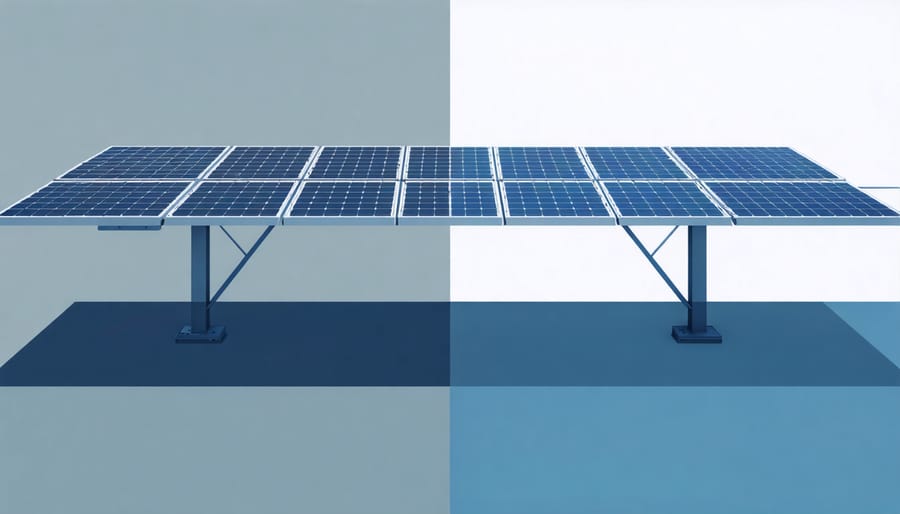
PERC Technology: More Power from Less Space
PERC technology represents one of the most significant breakthroughs in solar panel efficiency in recent years. This innovative design adds a special layer to the back of traditional solar cells, allowing them to capture more sunlight that would otherwise be lost. Think of it as adding a mirror that bounces light back through the cell for a second chance at energy production.
For homeowners, PERC panels offer several compelling advantages. First, they generate about 6-12% more power than standard panels in the same amount of space – a crucial benefit for homes with limited roof area. This means you can either install fewer panels to meet your energy needs or generate more power from the same number of panels.
These panels also perform better in real-world conditions. They’re more efficient in high temperatures and low-light situations, making them ideal for cloudy days or early mornings and late afternoons. This translates to more consistent energy production throughout the day and across seasons.
The best part? PERC technology has become increasingly affordable as manufacturing processes have improved. While they might cost slightly more upfront than standard panels, the additional energy production often makes up for this difference through greater electricity savings over time. For homeowners looking to maximize their solar investment, PERC panels offer an excellent balance of efficiency, reliability, and cost-effectiveness.
Smart Integration Features That Save You Money
AI-Powered Energy Management
Artificial intelligence is revolutionizing how we harness and manage solar energy, making solar power systems smarter and more efficient than ever before. These intelligent systems analyze weather patterns, energy consumption habits, and grid demands in real-time to optimize your solar panel performance.
Modern AI algorithms can predict cloudy weather conditions and automatically adjust your system’s energy storage and usage patterns. This predictive capability ensures you’re never caught off-guard during periods of low solar production. When combined with recent solar storage breakthroughs, AI-powered systems can determine the best times to store excess energy or sell it back to the grid, maximizing your return on investment.
Smart home integration takes this intelligence even further. Your AI-enabled solar system can automatically run energy-intensive appliances during peak solar production hours and reduce consumption during less optimal times. The system learns from your household’s patterns, making automatic adjustments that save you money without sacrificing comfort.
For homeowners, this means hands-free optimization of their solar investment. The AI handles complex decisions about energy distribution, storage, and consumption, while providing easy-to-understand reports and recommendations through user-friendly mobile apps. This technology effectively turns your solar installation into a personal energy management system that grows smarter over time, continuously improving its efficiency and saving you more money year after year.
Real-Time Performance Tracking
Modern solar panel systems come equipped with sophisticated monitoring capabilities that put real-time performance data at your fingertips. Through user-friendly smartphone apps and web portals, homeowners can track their solar production, energy consumption, and cost savings throughout the day.
These smart monitoring systems provide detailed insights into how much energy your panels generate during different weather conditions and seasons. You’ll see exactly how much electricity your system produces, how much you’re using, and when you’re sending excess power back to the grid. This data helps you optimize your energy usage by identifying peak production hours and adjusting your consumption patterns accordingly.
Many monitoring platforms also send automatic alerts if your system’s performance drops, helping you quickly identify and address potential issues like dirty panels or equipment malfunctions. Some advanced systems even integrate weather forecasts to predict your next day’s solar production, allowing you to plan your energy usage more effectively.
The financial benefits are clear – you can track your exact energy savings, monitor your return on investment, and even generate detailed reports for tax purposes. Some platforms also gamify the experience by showing your environmental impact, such as equivalent trees planted or carbon emissions avoided, making it engaging and rewarding to track your contribution to a greener future.
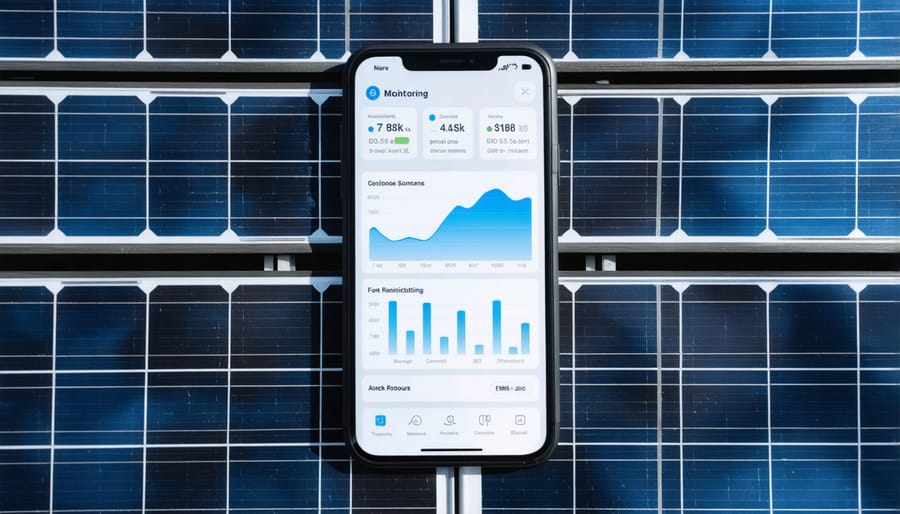
Weather-Ready Innovations
Self-Cleaning Surfaces
One of the biggest challenges homeowners face with solar panels is keeping them clean and operating at peak efficiency. Modern solar panels now feature innovative self-cleaning technologies that make maintenance easier than ever. Hydrophobic coatings, similar to those used on smartphone screens, create a water-repelling surface that helps rain naturally wash away dirt and debris. These coatings reduce dust accumulation by up to 90% and help maintain optimal energy production.
Automated cleaning systems take maintenance even further. Some panels now come equipped with tiny sensors that detect when cleaning is needed. These systems use minimal water and environmentally-friendly solutions to keep panels sparkling clean without requiring homeowner intervention. Robotic cleaners can navigate entire solar arrays, working during off-peak hours to ensure maximum efficiency during prime sunlight hours.
The best part? These self-cleaning features typically pay for themselves through increased energy production and reduced maintenance costs. Homeowners no longer need to climb on roofs or hire expensive cleaning services, making solar energy an even more attractive and hassle-free investment for sustainable living.
Enhanced Weather Resistance
Modern solar panels have made remarkable strides in weather resistance, making them more reliable and durable than ever before. Today’s panels can withstand extreme temperatures, heavy rain, hail, and even hurricane-force winds, giving homeowners peace of mind about their investment.
Manufacturers now use advanced tempered glass that’s up to four times stronger than standard glass, capable of handling hailstones as large as one inch in diameter. The frames are built with corrosion-resistant aluminum that prevents rust and deterioration, even in coastal areas with high salt content in the air.
Most current solar panels undergo rigorous testing, including exposure to winds up to 140 mph and snow loads of up to 5,400 Pascal (equivalent to several feet of heavy snow). Improved water-sealing technology prevents moisture infiltration, significantly reducing the risk of internal damage and electrical issues.
These enhancements mean today’s solar panels typically last 25-30 years with minimal maintenance, performing reliably through all seasons. Some manufacturers even offer enhanced warranties specifically covering weather-related damage, providing additional protection for your investment.
Installation Improvements That Make Switching Easier
Sleeker Designs for Modern Homes
Gone are the days when solar panels were bulky eyesores that detracted from a home’s curb appeal. Today’s game-changing solar technologies have revolutionized both form and function, offering homeowners sleek, aesthetically pleasing options that complement modern architecture.
Solar roof tiles represent perhaps the most dramatic aesthetic advancement, seamlessly integrating with existing roofing materials. These tiles look virtually indistinguishable from traditional shingles while harvesting solar energy efficiently. Available in various styles and colors, they allow homeowners to maintain their home’s architectural integrity while embracing renewable energy.
Building-integrated photovoltaics (BIPV) take this concept further by incorporating solar technology directly into building materials. From solar windows to power-generating facades, these innovations transform ordinary surfaces into energy-producing assets without compromising visual appeal.
Color customization has also evolved significantly. Manufacturers now offer solar panels in different hues and patterns, allowing homeowners to match their roof color or create subtle contrasts. Anti-reflective coatings not only improve efficiency but also reduce the traditional glossy appearance that many homeowners found distracting.
Slim-profile panels have become increasingly popular, sitting just inches above the roofline rather than protruding noticeably. Some models feature hidden mounting systems that eliminate visible hardware, creating a clean, floating appearance that architects and designers appreciate.
For those concerned about aesthetics, transparent solar panels offer an exciting alternative. These clear or nearly invisible panels can be integrated into windows or skylights, generating power while maintaining natural light and views. This breakthrough particularly appeals to owners of modern homes where maximizing glass surfaces is desirable.
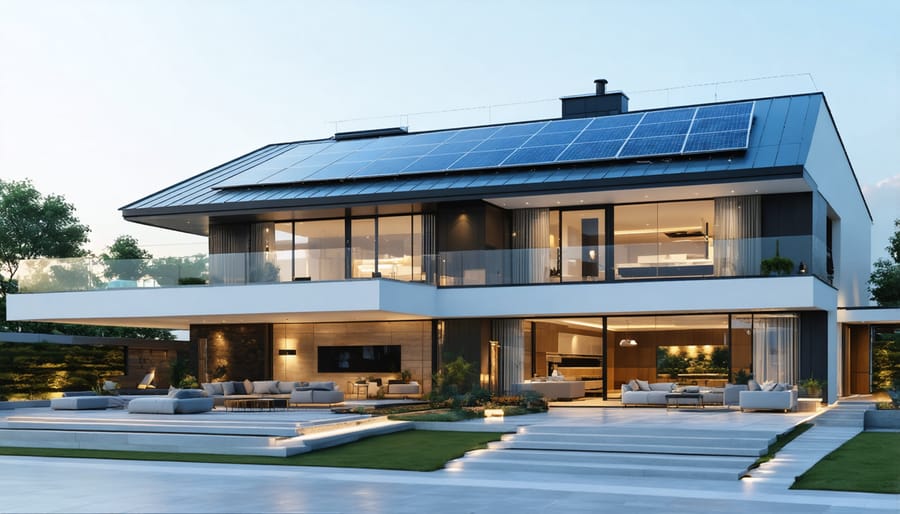
Faster Installation Technologies
The solar industry has made remarkable strides in streamlining installation processes, making it faster and more cost-effective than ever to add panels to your home. Modern mounting systems now feature snap-together components and pre-assembled parts that significantly reduce installation time – what once took days can often be completed in just hours.
Rail-free mounting systems have revolutionized the installation process by eliminating the need for traditional mounting rails. These innovative systems attach panels directly to roof mounts, cutting installation time by up to 40% while maintaining structural integrity. This not only saves on labor costs but also creates a sleeker, more aesthetically pleasing appearance.
Plug-and-play electrical connections have replaced complex wiring systems, allowing installers to connect panels quickly and safely. These weather-resistant connectors simply click together, reducing the risk of installation errors and improving overall system reliability.
Ground-mounted systems have also seen improvements with helical piles that can be quickly screwed into the ground, replacing traditional concrete foundations. This method not only speeds up installation but also minimizes environmental impact and allows for easier system removal or relocation if needed.
Digital design tools now enable installers to plan panel layouts precisely before arriving at your home. Using satellite imagery and 3D modeling, they can determine optimal panel placement, identify potential obstacles, and calculate exact material needs – all of which streamline the installation process and reduce on-site complications.
These advancements in installation technology not only make solar more accessible but also help reduce overall system costs, making the switch to solar power more attractive for homeowners than ever before.
The remarkable advancements in solar panel technology have transformed residential solar from a costly experiment into a practical, efficient home upgrade. Modern panels offer significantly higher energy conversion rates, improved durability, and enhanced aesthetics that complement any home’s architecture. With smart monitoring systems and improved storage solutions, today’s solar installations provide homeowners with unprecedented control over their energy production and consumption.
These innovations have made solar power more accessible and affordable than ever before. The combination of increased efficiency, lower installation costs, and attractive incentives means homeowners can now expect shorter payback periods and greater long-term savings. Additionally, advanced manufacturing techniques have significantly reduced the environmental impact of solar panel production, making them an even more sustainable choice.
For homeowners considering solar installation, there’s never been a better time to make the switch. Current technology offers reliable performance in various weather conditions, minimal maintenance requirements, and systems that can be easily upgraded as new innovations emerge. The integration of solar with smart home technology also provides convenient monitoring and management through simple smartphone apps.
By investing in modern solar solutions, homeowners not only contribute to environmental sustainability but also secure their energy independence and protect themselves against rising utility costs. As technology continues to advance, the benefits of solar power will only become more compelling, making it an increasingly smart choice for forward-thinking homeowners.

